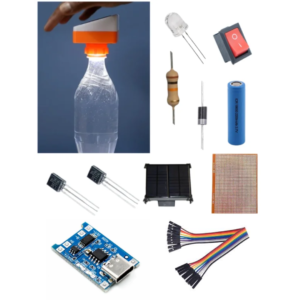5 Innovative SmartXProKits DIY STEM Kits to Build Skills & Create Solutions
1. Why DIY STEM & Sustainable Tech Matter
In a time when environmental awareness, automation, and smart technologies are increasingly part of everyday life, combining learning with action is more important than ever. DIY STEM kits are excellent tools to teach not only electronics, coding, and mechanics, but also sustainability and creative problem‐solving. Kits that let you build something useful (not just decorative) make learning meaningful.
SmartXProKits’ selection of DIY projects includes animatronics, smart feeders, renewable energy gadgets, and upcycling ideas. These are ideal for students, hobbyists, teachers, or anyone curious to build rather than buy.
2. SmartXProKits: Blending Creativity, Electronics & Environment
SmartXProKits stands out because many kits are more than just electronics—they encourage thinking about power sources, energy efficiency, automation, IoT (internet of things), and reuse of materials. Let’s look at five specific kits and see what makes each one special.
3. Kit 1: Dual-Eye Animatronics Eye Mechanism
What it is:
A mechanism to build a dual-eye animatronic setup, where the “eyes” move in coordinated ways via servo motors and a control circuit. It’s a great intro to animatronics and robotics.
Learning & Skills:
Servo motors & motion control
Synchronisation & programming/logic for smooth motion
Electronics: wiring, likely microcontroller or driver circuits
Mechanical design & basic structure
Why it’s cool:
You get something lifelike (eyes moving!) — very visual & satisfying. Good for art-meets-tech projects, display pieces, or even Halloween / cosplay props.
4. Kit 2: Programmable Aquarium Fish Feeder
What it is:
An automatic granular food dispenser for aquariums, driven by an Arduino Nano and SG90 servo motor. Programmable so you can schedule feeding reliably.
Learning & Skills:
Microcontroller programming (Arduino)
Working with servos & timing
Designing a mechanical feeder/granular dispensing component
Understanding of real-world constraints (moisture, reliability)
Potential Uses:
Great for pet owners, school science projects, aquarium clubs. Helps with ensuring fish are fed even when you’re away, reduces under/over feeding, automates routine.
5. Kit 3: Helical Vertical Wind Turbine with Generator LED
What it is:
A 3D printed vertical wind turbine DIY kit that generates electricity (light an LED) using wind. Probably uses a small generator/motor + LED as proof of concept.
Learning & Skills:
Principles of renewable energy & wind power
Aerodynamics: turbine blade design, how shape & orientation affect performance
Mechanical assembly & balancing
Basic circuits & energy conversion
Why important:
Understanding green energy is key. This kind of kit gives hands-on insight into how wind can be harnessed. Also useful in science fairs or sustainability education.
6. Kit 4: WiFi-Controlled Pet Feeder using ESP8266
What it is:
A smart pet feeder controlled over WiFi, using the ESP8266 microcontroller. Includes 3D printed parts for dispenser, likely controlled via app or web interface.
Learning & Skills:
IoT concepts: remote control, WiFi communication
Programming microcontrollers (ESP8266)
Mechanical dispenser design
Interfacing electronics & firmware, safety for pet-safe materials
Why it’s futuristic:
It blends convenience and tech—feeding pets from anywhere. Also teaches modern skills (IoT) so learners get exposure to what’s in demand in tech fields.
7. Kit 5: Solar Bottle Lamp V2.0 Using Upcycled Plastics
What it is:
A solar-powered lamp built using upcycled plastic bottles, with a 3D-printed enclosure. Solar panels + rechargeable cells or circuitry to charge and run an LED.
Learning & Skills:
Solar energy harvesting & storage
Upcycling & sustainability: reusing plastic bottles
Enclosure design & fabrication
Light circuitry & energy efficiency
Why it resonates:
Sustainability is both trendy and necessary. Projects like this reduce waste while giving learning value. Useful for off-grid lighting, emergency uses, or awareness of resource consumption.
8. Educational & Environmental Benefits of These Kits
Here are some of the broader benefits these kits offer:
Hands-on & Experiential Learning: Engaging more senses; builds understanding better than reading alone.
Interdisciplinary Skills: Electronics, mechanics, programming, design, environmental science.
Sustainability Awareness: With solar, harvesting energy, upcycling, you learn to think green.
Problem Solving & Creativity: Customizing, debugging, improving design (e.g. better wind turbine blades).
Motivation & Confidence: Building something functional gives satisfaction & encourages further learning.
9. How to Choose the Right Kit for Your Goals
| Criterion | Why It Matters |
|---|---|
| Your skill level / prior experience | Some kits (ESP8266, wind turbine) need more electronics / programming comfort, others are simpler. |
| Goal of the build | Is it to learn, to display, to use daily (pet feeder), or for sustainability (solar lamp)? |
| Components & documentation | Good manuals, example code, support make a big difference. |
| Materials & safety | Pet-safe materials, safe circuitry, robust mechanical parts. |
| Power / energy source | Solar or battery powered vs mains; reliability; cost. |
| Expandability | Can you add sensors, improve design, or reuse parts in future projects? |
Conclusion
SmartXProKits offers a fantastic lineup of DIY STEM kits that merge technology, sustainability, and creativity. Whether you want to build animatronics, automate pet care, harness wind or solar energy, or recycle plastic into something useful — there’s a kit here that can spark inspiration and learning.
























